Pouches
POUCHES
flexible packaging for food & more
The world of flexible film and stand up pouches is incredibly confusing. EcoEnclose is here to help guide you through this sea of complex information with technical guidance and steps to make your pouches more eco-friendly.
Pouches are almost always landfilled and made with virgin material. We help brands transition to innovative materials to make their pouches more circular and sustainable.
LOW-VOLUME STOCK
Curbside Recyclable Paper
Kraft Stand Up Pouch
MOQ: 100 or 1000 units
- Coated virgin paper
- Curbside recyclable
- Stock, no customization
HIGH-VOLUME CUSTOMIZATION
Curbside Recyclable Paper
Custom construction and print
MOQ: 20,000 units
- Coated virgin paper
- Curbside recyclable
- Various barrier options
Recycle-Ready PE
Custom construction and print
MOQ: 20,000 units
- Multiple layers of PE
- Small layer of EVOH for barrier
- Thin film recyclable
Recycled Metalized Film
Custom construction and print
MOQ: 20,000 units
- Layers of PET, METPET, PE
- High barrier
- 30-45% PCR, not recyclable
Request a High-Volume Customization Quote
Guide to Pouches & Flexible Food Packaging
Read
Any brand trying to take the sustainability of their pouches to the next level will run into many different materials, claims, and requirements to balance.
Thankfully, you’ve come to the right place.
Our Ultimate Guide to Pouches provides an in-depth look at the world of flexible film for food and retail packaging.
What are Pouches?
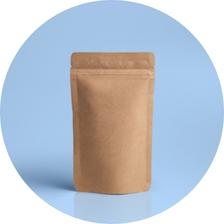
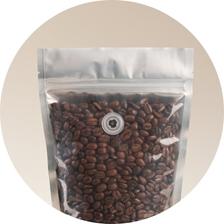
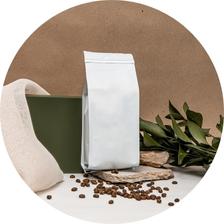
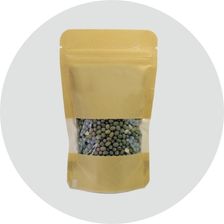
Standup pouches have several pros, which is why many brands are leaping towards them.
The pros of stand up pouches:
- They are typically more cost-effective than rigid packaging due to the direct cost of packaging and the indirect costs incurred for packaging storage and transportation.
- They are often more carbon efficient than rigid packaging.
- They can be easily printed directly, which is not true of all rigid packaging. This eliminates the need for labels.
The cons of stand up pouches:
- Most are not thin-film recyclable because of their multi-material and multi-layer construction. Mono-material constructions are becoming more common and are recycle-ready.
- Most are not curbside recyclable because their material is flexible.
- Most are made with 100% virgin materials.
Pouch Films
Outer Layer

Referred to as “the print web,” is often made with PET, BOPP, or paper, and is often matte for brands that want a non-glossy finish.
Middle Layer

Referred to as “the barrier layer,” is often made with metalized PET, VMPET, aluminum, VMCPP, nylon, or any combination of these materials.
Inner Layer

Made with linear low-density polyethylene (LLDPE)
Pouch Constructions

Standard Stand Up Pouch
This is the most popular and is the pouch you likely see most often in grocery stores. These pouches are sealed on the sides and have two seals at the bottom, so the bottom opens up like a pointed oval. The bottom gusset is constructed in several ways, including a plow bottom, doyen style, and k-seal.
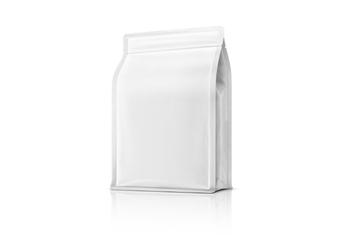
Quad Seal / Box Bottom Pouch
Most commonly used for premium, heavy products, this type of pouch has four side seals and is then sealed at the bottom. When filled, these pouches stand upright, hold their shape well, and become cylindrical, creating space efficiency in transit and on retail shelves. They often carry more weight than a standard standup pouch.
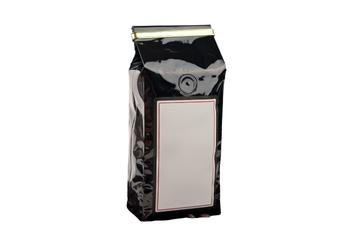
Coffee Pouch
Most commonly used for coffee, this type of pouch is sealed at the bottom and expands into a four-sided pouch. These pouches do not come together at the top and are typically folded over between uses and then sealed with a tin tie or a resealable sticker. When filled, these pouches stand upright, hold their shape, and become cylindrical, creating space efficiency in transit and on retail shelves. They often carry more weight than a standard standup pouch.
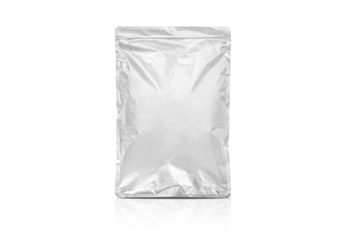
Three-Side Seal Pouch
These pouches are sealed on the sides and have a single seal on the bottom. They aren’t designed to stand up at all. This style of pouches often has a hang hole at the top and is designed to hang on a retail rack. These are often used for jerky and dried fruit packaging.

Sachet
Very similar to three-side seal construction but are intended for single servings - think tea bags, vitamins, single servings of candy, etc. The material for sachets is typically sold and received as roll stock versus fully formed pouches and is then formed, filled, and sealed into individual sachets inline.
Finishings:
Flexible packaging has several different “finishings,” including reclosures, cutouts, and functional additions. Almost all pouches will have a notch for opening. Once opened, pouches can also have mechanisms for reclosing.
Cutouts, particularly retail hang holes and transparent windows, are a common part of pouch packaging.
Degassing Mechanism:
Some flexible packaging - particularly coffee packaging - may require a degassing mechanism.
When coffee is roasted, gas builds up in the beans and releases over 3-14 days after roasting. If coffee is packaged right after roasting, degassing valves enable the gas to release from the packaging rather than staying trapped inside the packaging, which can cause the bag to become “bloated”. So, coffee companies that package their coffee immediately after roasting it or intend for their coffee to remain packaged for a long time before consumption will require a degassing valve to be attached to their pouches. Not all coffee brands require this degassing feature - particularly those in the eCommerce space - but many do.
Barrier Properties of Flexible Film
Moisture:
Some products are susceptible to moisture and - to protect from molding or clumping - require packaging that keeps any water vapor transmission to an absolute minimum. A film construction’s Water Vapor Transmission Rate (WVTR) measures the grams of water that can move through 100 sq. in. of film over 24 hours. High WVTR barriers tend to be at or below 0.12, while low barrier films tend to be above 5.
Oxygen:
Some products' aroma and flavors can deteriorate if exposed to too much air. The Oxygen Transmission Rate (OTR) measures the cubic centimeters of oxygen that moves through 100 square inches of film in 24 hours in a specified humidity level (the default humidity level is currently 60%). High OTR barriers are at or below 0.06, while low barrier films are above 10.
Light:
Nutrients in some products can deteriorate with light exposure. UVR measures how much light goes through a material and is measured either by a spectrometer, which measures light transmittance %, or by degradation, which measures the change in product profile over time.
- Non-Food Items
- Individually Wrapped Foods
- Loose Tea & Coffee
- Powders
- Sugars
- Supplements
- Granola & Baked Goods
- Snacks, Chips, Jerky, Dried Fruit
- Pet Food
- Liquids
Most non-food items such as apparel and personal care products don't need any barrier properties at all.
Assuming the single-serving packaging provides the required protection, pouches for individually wrapped foods are unlikely to need any barrier properties. An example is when gummy candies are packaged in individual snack bags. These bags (typically foil-lined) protect the gummies. The outer packaging is unlikely to require any additional barrier properties.
Loose tea would benefit from mid-level oxygen and moisture protection while coffee would benefit from mid-level moisture protection and high levels of oxygen protection to preserve aromas.
If clumping or molding of your powder is a concern, it would need high levels of moisture protection. If nutrient levels are critical to maintaining (like a protein powder), high levels of oxygen and light protection are needed. If not (such as standard wheat flour), moisture, oxygen, and light protection can be low to medium.
Granular sugars like cane sugar need minimal barrier protection, while fine sugars may need mid to high moisture levels and oxygen protection.
Supplements, in gummy or capsule forms, need high moisture protection (to prevent clumping and maintain texture and shape) and high oxygen and light protection to preserve critical nutrients. Products like these often require desiccants to capture moisture generated by the product (inside the packaging). At times, thermal layers are required to protect from heat.
For granola and other baked goods, the protection level varies by the product's packaging. Dry granolas need low to mid-levels of protection. While snacks with dried fruits often need high levels of moisture. Cookies and other baked goods need moisture protection to prevent molding over time.
Snacks and chips often need very high levels of oxygen and moisture protection to preserve texture and flavor and prevent products from going stale. Drief fruit and jerky typically need very high levels of moisture protection and mid-levels of oxygen protection. Light protection is not as critical unless a long shelf life is anticipated (especially for dried fruits).
Pet food texture can be very sensitive to humidity and requires high moisture protection. Flavor and quality also need to be protected through an oxygen barrier. Many pet foods are particularly high in fat and need protection from all elements.
For liquids, the specific barrier properties are driven by the packaged liquid itself. For liquids in particular, it is important to consider the product's weight (and potential for puncture and breakage) and whether or not acid levels or grease can stain or leach through the plastic. When packaging liquids, brands need to consider the film's thickness, tensile strength, and staining properties. Nylon is often introduced as one of the layers to meet these needs.
Print and Finishing Methodologies
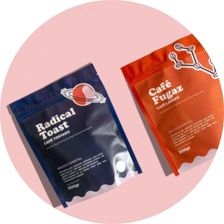
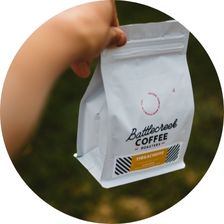
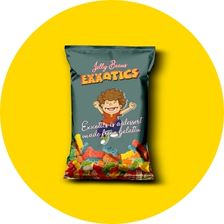
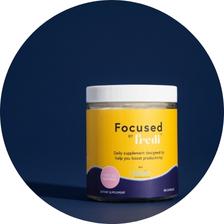
Flexographic Printing:
Traditionally, film has been printed using flexographic techniques. With flexo printing, printing plates are produced (one for each color), and jobs are set up on large multi-color, web-fed presses. After an often time-consuming setup, jobs run extremely fast.
Flexographic printing is generally appropriate for larger volume runs (usually 75,000 units and above) when the setup time can be amortized over many mailers.
Digital Printing:
With digital printing, made far more common and accessible due to the emergence of HP Indigo printers, no printing plates are needed. Film is printed based on an electronic image file. Setup time is minimal, but jobs run much more slowly than on a flexographic printing press.
Digital printing makes sense for lower volume runs when long setup times don’t make sense and the slower run time is not a major hindrance. Printers often find that innovative films, such as ones that have recycled content or are a mono-material, may need to run more slowly to work well. Digital presses, which already run significantly more slowly, can be a bit more accommodating of these.
Eco-Friendly Flexible Film and Pouch Construction Options
There is no pouch that meets all of the above features! Given this, how do you recommend my business prioritize these features and my options?
Unfortunately, no standup pouch today is fully circular (i.e., made with 100% recycled content and readily recyclable). Recognizing this, we recommend taking leaps towards this end vision, even while acknowledging that you aren’t going to get to that end goal right away.
Steps to make your brands’ pouches more circular include
- Source inputs: Maximizing recycled content, both post-consumer waste (priority) and recycled post-industrial waste (often referred to as pre-consumer waste).
- Source inputs: If recycled content isn’t an option, another alternative is to use bioplastic made with crops that do not deplete and pollute soils and waterways (and ideally, crops that regenerate soils and waterways).
- End of life: Using a mono-material plastic film that can be “recycle-ready.” This term means that every layer in the pouch is made with the same type of polymer, so it can technically be recycled. Occasionally, these recycle-ready films are mono-material but contain a small amount of another material (such as aluminum or silica spray). The secondary material is present in such low volumes that the end of life is not affected.
- End of life: Using a paper pouch with a minimal enough volume of recycle-friendly sealant that it can be curbside recycled.
- End of life: In a small set of situations, a compostable pouch (if derived from crops that are not industrially farmed and do not deplete soils and waterways) could be the right solution. This is particularly true when it will be tough for customers to remove your product from the interior of your pouches (and your product itself is also compostable).
While you’re unlikely to be able to create a perfectly circular standup pouch today, recognize that as your brand pushes for one or more of the above - maximizing recycled content, designing for recyclability, etc. - you will help build a future in which all pouches are more and more sustainable. For example, when you demand and are willing to pay a small premium for post-consumer waste in your packaging, you signal to extruders, reclaimers, and recyclers that they need to invest in increasing their supply and technical capabilities when it comes to recycled inputs.
What is a mono-material?
Most pouches are made with a combination of polymers and materials. PET (polyethylene terephthalate), Polypropylene (PP), Polyethylene (PE, including LDPE, LLDPE, and HDPE), and PA (nylon) are all different types of polymers. While many of these plastics are recyclable, they generally cannot be readily recycled when laminated because their chemical and functional properties differ greatly.
Additionally, most pouches also include a metalized layer. The introduction of non-plastic elements (even if all of the polymer layers are made of the same material) renders the pouch unrecyclable.
Mono-material refers to any material or packaging made from a single material. When it comes to paper, glass, and aluminum, this is very straightforward. Paper itself is a mono-material. When it is laminated with a layer of plastic, it is no longer a mono-material and typically can’t be recycled. With mono-material plastic packaging, it isn’t enough to just say - this is all plastic. The specific polymers must all be the same across the entire film structure to qualify as a mono-material.
Not all mono-materials are currently recyclable because “being recyclable” depends on several factors, including whether or not an MRF can adequately sort material and if markets are ready to buy it. For example, nylon film isn’t recyclable in most of the US, so a 100% nylon pouch will not be recyclable. However, developing packaging made of a single material is generally one of the first steps when designing for recyclability.
What do you mean by “recycle-ready”?
In the US, polyethylene (either LDPE or HDPE) has become relatively easy to recycle. While the material is generally not curbside recyclable, most Americans live close to a retail store where consumers can drop off plastic bags for free to be recycled into compulsive lumber. A pouch purely made with polyethylene or mostly polyethylene with a tiny percentage of non-PE (such as EVOH or a spray of silicone to provide a barrier layer) can often pass the test of being “thin film recyclable.” The Association for Plastics Recycling and Trex (the country’s largest recycler of PE film) have a service by which they will review and test a brand’s packaging to determine if their line can successfully recycle the material.
Unfortunately, however, it is currently challenging for sorters to determine if a pouch is recycle-ready or not because they look, feel and act the same. And, if a metalized or non-recycle-ready pouch goes to Trex, it can shut down the entire line (which is a very costly issue for them). While pouches can be designed to be recycle-ready, it is currently unlikely that facilities will successfully recycle them.
This landscape is changing rapidly, and many nonprofits and industry associations are working together to make it easier for the film recycling supply chain to identify and successfully sort in PE pouches.
As such, while we recognize the current reality, we also encourage brands to pursue recycle-ready pouches. These investments will help spearhead innovation by extruders, barrier technology developers, and converters - investments that will pay off as film recycling improves.
What do you mean by PCR?
PCR is post-consumer resin or recycled content from packaging and materials already used. This material includes soda bottles (PET), milk jugs (HDPE), and plastic bags (LDPE). When it comes to pouches, the polyethylene (LLDPE, LDPE, HDPE, and “MDO”) and PET layers can both be made with some PCR content. Then, the total PCR content across the pouch is calculated by weight percentage.
Recycled content can also be made from post-industrial or pre-consumer waste or waste that is generated from one manufacturing process that is then used by another manufacturing line. We refer to this as PIR or post-industrial resin.
Are bioplastic resins better?
In general, EcoEnclose recommends maximizing PCR as the first priority when it comes to source inputs. However, if this is not feasible, incorporating the right bioplastic resins into the construction makes sense. For us, “the right resins” includes bioplastics whose production is not actively depleting the environment. EcoEnclose avoids using corn and other industrially farmed starch-heavy crops as inputs into bio-resins. However, plastic made from bamboo, hemp, and kelp can be auspicious, and we are eager for these to be more broadly commercialized and accessible in the future.
Unfortunately, today, the commercial viability and cost of these types of inputs are limiting, so while we are actively working on these technologies long-term, we aren’t able to offer them to most brands as a packaging option today.
Learn More: Bioplastics for eCommerce Packaging
What about biodegradable pouches?
Some brands reach out looking for biodegradable pouches. This term is vague, so we work closely with them to flesh out exactly what they seek. Specifically, we work to determine:
- Are they looking for a compostable pouch? If so, we seek to understand why. Is it because your product will likely remain on the pouch (this step will help that food residue get directed to compost bins)? Then, compostable packaging is likely right. If not, compostability is likely not the right end-of-life situation.
- Are they looking for a pouch that won’t contribute to ocean plastic pollution if it ends up as litter? If yes, we first talk through the ocean plastic crisis. While some flexible packaging is likely to end up as litter (think candy bar wrappers and chip bags), most pouches sold by our brands aren’t likely to end up in the ocean. Suppose it is critical to design packaging to ensure it does not contribute to ocean plastic pollution. In that case, we encourage brands to look into paper-based packaging, including our unique, curbside recyclable, naturally biodegradable paper pouch.
What about degradable pouches?
Typically, “degradable” means that plastic has been given an additive that accelerates degradation in one or more types of environments, including composting facilities or landfills.
We strongly discourage brands from pursuing these types of plastic! Many degradable plastics are designed to biodegrade in landfill. This means they are designed to create methane emissions, actively contributing to landfill gas emissions. These are the third largest contributor to emissions generated by the US. Materials sent to the landfill should be stable and designed not to biodegrade!
These additives can also lead to irresponsible waste management, including composting plastics, a step that will degrade the quality of compost piles.
Are there any challenges or downsides to eco-friendly pouches? Why aren’t eco-friendly pouches the norm today?
There are various reasons why pouches have - to date - been largely made in unsustainable ways.
Adding recycled content and post-consumer resin, in particular, can create bubbles and imperfections in the outer layer, which can be a significant challenge for brands that are extremely focused on the branding, design, and aesthetics of their packaging.
Additionally, high recycled content can mean that machines have to be run more slowly, which makes packaging more expensive for brands.
Additionally, as converters and printers work with more sustainable film for the first time, they may find that they have more waste, more stretch in the material, or adhesion issues. When designing mono-material, recycle-ready pouches, packaging providers have thus far been hesitant because of the stability and strength of the barrier properties of metal layers. The supply of sustainable inputs, such as EVOH and post-consumer resin, can be limited.
But above all, the main barrier in this space has been the general lack of demand to date. Without the pull of demand from brands, extruders, printers, and converters have no reasons to make positive progress on the sustainability of their film. Making positive progress like this is costly and time intensive and is a step that is only worth taking if brands and consumers ask for it.
How do I choose between all of these “eco options”?
As you navigate the world of eco-friendly pouches, you may decide between one pouch construction with a higher level of post-consumer waste and one that is recycle-ready. You might find yourself choosing between a recycle-ready pouch and a compostable construction.
Ultimately, that decision should be based on several factors, including
- Your brand’s sustainability framework and eco priorities. EcoEnclose has a detailed vision for sustainable packaging and a supporting framework that helps us make these complicated decisions for ourselves. We can help you create your framework and apply it to your choices.
- Your functional and barrier needs, and which construction(s) will best meet these
- The current availability of recycled content. The availability of recycled content for pouches ebbs and flows. If there is a period in which recycled content supply is minimal, it may encourage your brand to consider recycle-ready instead.
- Your willingness to bring new technologies and materials to market, particularly if they bring some changes to the pouch’s aesthetic.
- The values and priorities of your customer base.
- Your lead times. Films with high PCR can often mean higher lead times as extruders specially produce them on a one-off basis.
- Your budget.
As you can see, these answers aren't clear-cut, but we are here to navigate this process from beginning to end with you. Get in touch, and we will learn about your products, your functional packaging needs, present eco pouch options that can meet your needs, and help you choose between them based on your priorities.
Alternatives to Pouches
If pouches are not your best primary packaging solution, rest assured - you have options. Some companies, especially those that don’t need barrier properties, envision for a pouch, but ultimately choose a paperboard box or a standup paper mailer.
Some that need protection and barrier properties choose rigid plastic containers (PE, PET, or PP) or glass containers. The upside of these materials is that they can be more readily made with recycled content and are often curbside recyclable. The downside is that they are typically more expensive, material-heavy, and carbon-emitting.
We are here to navigate this process with you from beginning to end. Get in touch, and we will learn about your products and functional packaging needs, present eco pouch options, and help you choose between them based on your priorities.

